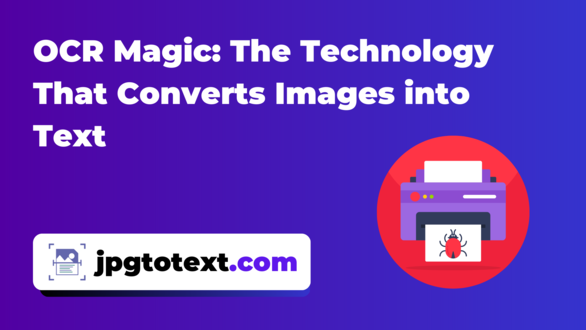OCR (Optical Character Recognition) technology has emerged as a crucial resource for contemporary document management. OCR software can turn handwritten notes, printed text, and even images into searchable digital text. The purpose of this article is to examine the technology behind OCR, as well as its advantages, uses, and available software.
What is OCR Technology?
OCR technology is a software or hardware system that can transform handwriting and printed text into digital text that can be electronically edited, searched, and stored. The text can be searched for and edited using OCR software, which can recognize and interpret individual letters, numbers, and characters from scanned images.
Benefits of OCR Technology
OCR technology has a number of advantages that can greatly enhance document management procedures. One of the major benefits of OCR technology is that it has the potential to enhance efficiency by reducing the duration and effort needed for manual data entry. By mechanizing the data entry procedure, OCR technology can assist companies in conserving a considerable amount of time and resources that would otherwise be spent on laborious and repetitive duties.
This also reduces the likelihood of employee exhaustion and inaccuracies caused by tiredness or lack of concentration and allows employees to concentrate on more important responsibilities.
OCR technology can also cut down on the price of processing, storing, and retrieving documents. OCR technology can assist organizations in lowering the need for physical storage space and the costs associated with document archiving and retrieval by automating the data entry process and making documents searchable. This is crucial for businesses that deal with many documents, like healthcare providers, law offices, and government organizations.
OCR Applications
OCR technology is useful for many different things, including document scanning, image text recognition, and handwriting-to-text conversion. OCR software can also be used to automatically extract specific data fields from forms, like invoices or receipts, making it easier to process and analyze the data.
OCR Software Options
Both individuals and businesses have a variety of options when it comes to OCR software. It's free to use and customizable to your specifications to use JPG to Text. Those on a limited budget or in need of a more specialized solution may find this to be a good option. On the other hand, commercial OCR software can cost more but frequently has more features and support.
It is crucial to think about aspects like accuracy, speed, and compatibility with your current systems when selecting OCR software. Since the accuracy of the software being used determines how accurate OCR technology is, accuracy is particularly crucial. The speed of the OCR software can also be an important consideration, especially for businesses that must process large volumes of documents quickly.
How to Use OCR Technology
To use OCR technology effectively, it is essential to follow some best practices for preparing documents for processing. Because the accuracy of the input image has a significant impact on the output accuracy of OCR software, documents must be scanned using a high-quality scanner. Any background noise, distortion, or skewing of the image should be reduced or removed before processing.
Once the image is prepared, OCR software can be used to process the image and convert it to editable text. The software will typically require some input or adjustments from the user to ensure accuracy. This may include selecting the language of the document or adjusting the software's settings to account for any specific formatting or layout features of the document.
OCR Challenges and Limitations
OCR technology has its share of difficulties and restrictions. Low-quality images might necessitate manual data entry, and the input image's quality can have a significant impact on the output's accuracy. And furthermore, there may be limitations in language and character recognition, particularly for non-Latin scripts. Finally, OCR software can be costly, particularly for processing large volumes of data.
Future of OCR Technology
A number of encouraging new advancements in OCR technology are in the works. OCR technology's capabilities are probably going to get better as machine learning and deep learning algorithms advance. It is probable that OCR will be integrated with other technologies, such as speech recognition and computational linguistics.
Bottom Line
OCR technology is essential to modern document management because it boosts efficiency, lowers costs, and increases accuracy. Despite its shortcomings and limitations, OCR software is a helpful tool for businesses and individuals looking to automate their document processing. OCR technology will probably improve with time, making it more useful for handling and processing documents. This will make it a fascinating area to watch in the years to come.
